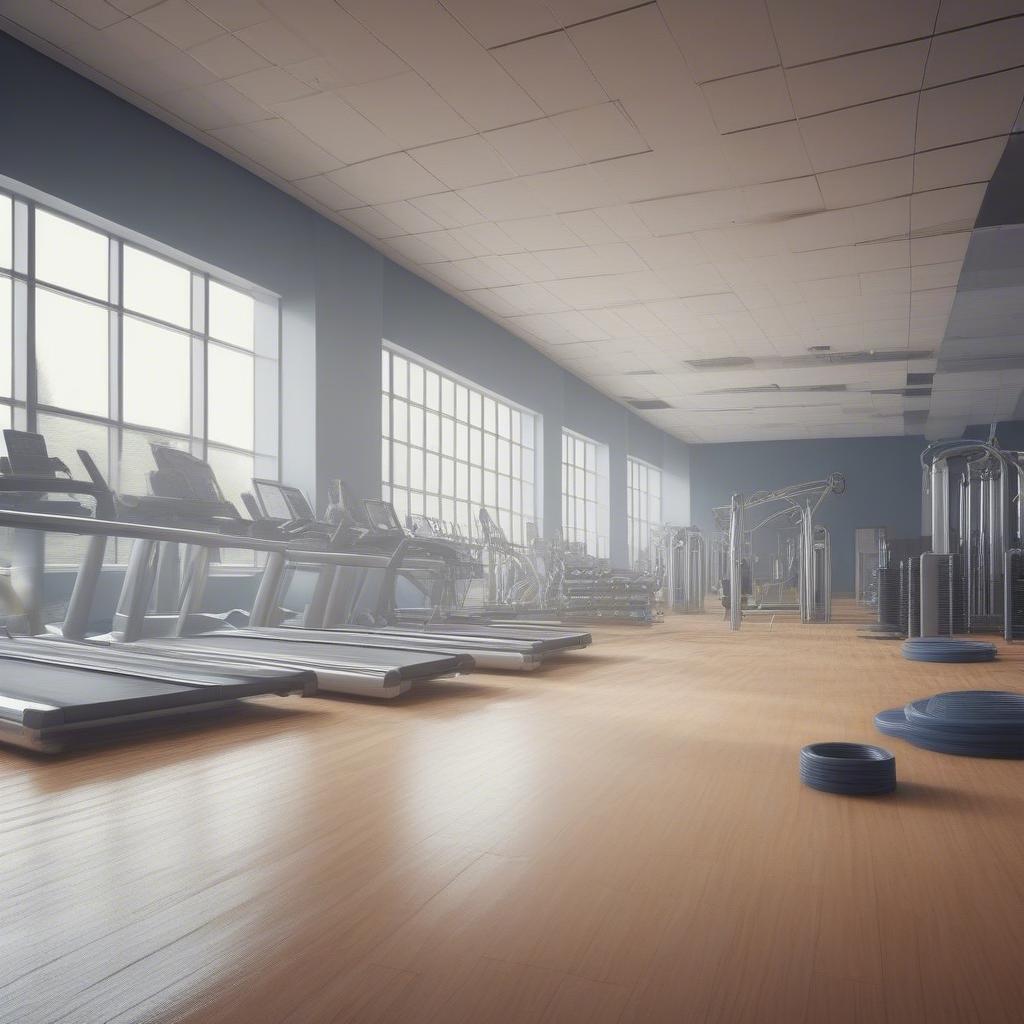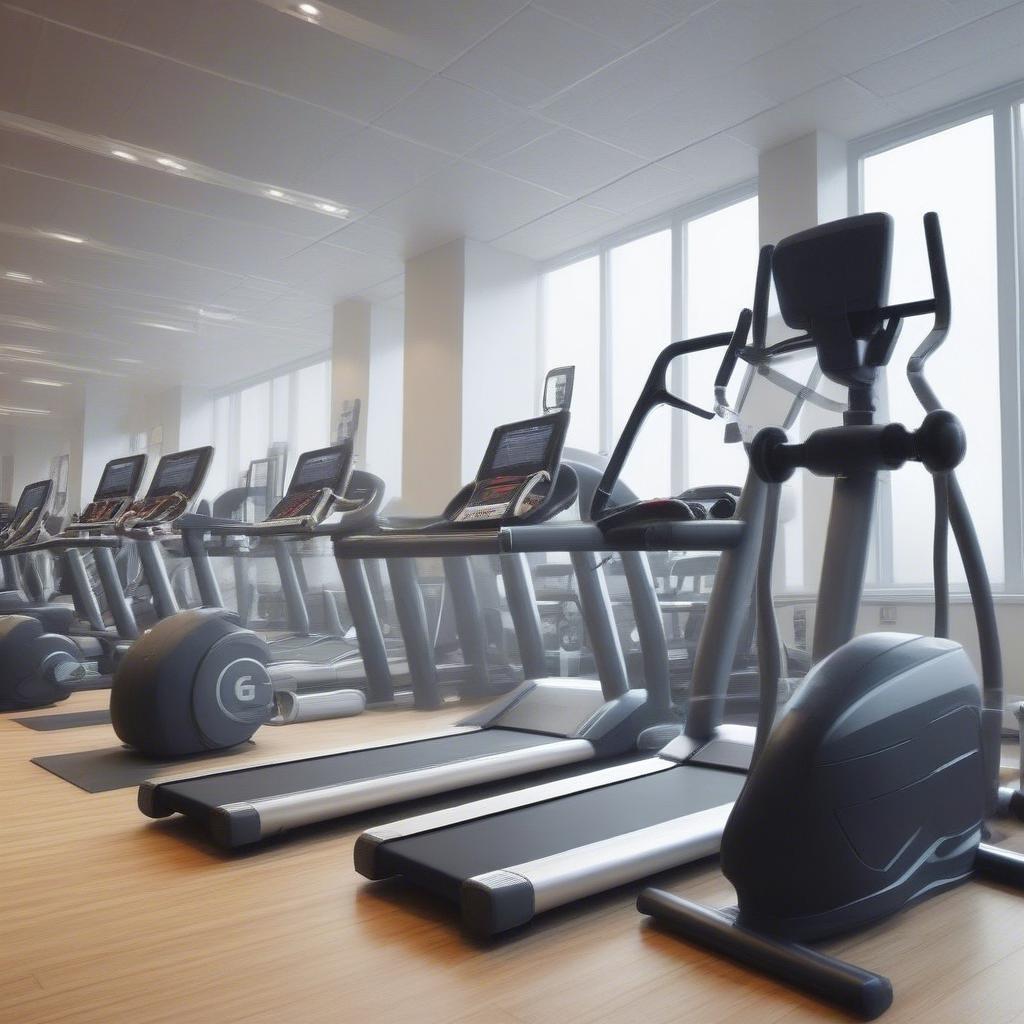
Disaster Preparedness Plan for Gyms: Ensuring Safety & Business Continuity
The rhythmic clang of weights, the upbeat music, the focused energy – your gym is a vibrant hub of health and community. But what happens when the unexpected strikes? A sudden storm, a power outage, or even a fire can disrupt operations, endanger members, and potentially damage your business reputation. A robust disaster preparedness plan isn’t just good practice; it’s essential for the longevity and well-being of your fitness business. This comprehensive guide will walk you through creating a detailed and actionable plan, ensuring you’re ready for anything.
Understanding the Need for a Gym Disaster Preparedness Plan
Why is a disaster recovery plan specifically crucial for gyms? The answer lies in the unique combination of factors:
High Occupancy & Diverse Population
Gyms often host a large number of people at any given time. These members can range in age, physical condition, and level of awareness. A well-defined plan ensures everyone can be evacuated and cared for safely, especially vulnerable individuals.
Specialized Equipment & Infrastructure
Your fitness business relies on expensive equipment, from treadmills and weight machines to sound systems and specialized flooring. A disaster could cause significant damage, hindering your ability to operate and costing thousands of dollars in repairs or replacements.
Potential for Injuries
During a chaotic situation, members may panic or get injured while trying to leave. Your plan needs to account for how you’ll handle on-site medical emergencies and prevent further harm.
Business Reputation
A gym that isn’t prepared for a disaster may lose members’ trust. A swift and organized response, on the other hand, reinforces your commitment to their safety and builds loyalty. A solid gym risk management strategy protects your brand and reputation.
Identifying Potential Risks: A Gym’s Vulnerabilities
Before you develop a plan, you must understand the specific risks your fitness business faces. These can be broadly categorized as:
Natural Disasters
- Severe Weather: Hurricanes, tornadoes, blizzards, floods, and extreme heat can all disrupt operations, causing power outages, facility damage, and potentially injuries. Consider local weather patterns and past incidents.
- Earthquakes: If you’re in an earthquake-prone area, your plan should include instructions for securing equipment, sheltering in place, and evacuation procedures after the shaking stops.
- Fires: These can be caused by faulty wiring, malfunctioning equipment, or even careless behavior. Fire prevention measures and a clear evacuation plan are critical.
Man-Made Disasters
- Power Outages: These can disrupt your entire operation, rendering equipment unusable, shutting off lights and ventilation, and potentially leading to security risks.
- Equipment Malfunctions: A malfunctioning treadmill or weight machine could cause injury during a normal workout but become a much larger threat in a crisis. Your maintenance records become an essential part of your risk management strategy.
- Chemical Spills: If your gym uses cleaning agents or pool chemicals, a spill could create a health hazard. Having proper storage and spill management procedures is vital.
- Security Breaches: Vandalism, theft, or even a more serious security incident could necessitate an emergency response.
- Pandemics/Epidemics: A fast-spreading illness could force closures and significantly impact your staff and membership base.
Internal Risks
- Staff Turnover: Consistent training on emergency procedures is vital, as staff changes affect your response capability.
- Lack of Training: If your staff isn’t trained on the emergency plan, your response will be ineffective. Regular drills are necessary.
- Poor Communication: Communication failures can amplify the chaos of an emergency. Your plan must define how staff communicate during a crisis.
Creating Your Disaster Preparedness Plan: A Step-by-Step Guide
Now that you know the "why" and "what," let’s get to the "how." This step-by-step guide will help you develop a comprehensive plan:
Step 1: Form a Disaster Planning Team
- Designate a Team Leader: This person will be in charge during a disaster and oversee the plan’s implementation. Ideally, it’s someone with leadership experience and a cool head under pressure.
- Include Staff Representatives: Bring in members from different departments: front desk, training, maintenance, and management. Their perspectives will ensure the plan is comprehensive.
- Regular Meetings: Hold regular meetings (at least quarterly) to review the plan, discuss updates, and conduct tabletop exercises.
Step 2: Develop Clear Emergency Response Procedures
This is the core of your plan and should address:
Evacuation Procedures
- Multiple Escape Routes: Identify and clearly mark primary and secondary evacuation routes. Ensure all exits are unobstructed and easy to access.
- Assembly Points: Designate safe assembly points away from the building. Provide clear signage and instructions on how to get there.
- Accountability: Have a system to account for all members and staff after evacuation, such as a roll call or a buddy system.
- Assistance for Disabled Members: Include protocols for assisting those with mobility limitations.
Shelter-in-Place Procedures
- Secure Location: Identify an area within your gym where members and staff can shelter safely during severe weather events. Ideally, this location should be away from windows and external walls.
- Supply Kit: Stock your shelter-in-place location with essential supplies like water, first-aid kits, blankets, and a flashlight.
- Communication: Maintain communication with emergency services and monitor updates.
First Aid and Medical Emergencies
- First Aid Stations: Clearly mark the location of first-aid kits and AEDs.
- Trained First Aiders: Ensure you have staff members trained in first aid and CPR. Update certifications regularly.
- Emergency Contact Information: Have readily available contact information for emergency services and local hospitals.
- Medical Protocols: Establish protocols for handling injuries and medical emergencies during an emergency.
Communication Protocols
- Internal Communication: Establish clear communication channels for staff during a disaster, such as two-way radios, walkie-talkies, or a group messaging app.
- External Communication: Have a pre-approved message for contacting members, media, and emergency services.
- Emergency Contact List: Maintain an updated list of emergency contacts for all members and staff.
Step 3: Secure Your Assets
- Equipment Inventory: Create a detailed inventory of all your equipment, including model numbers, serial numbers, and purchase dates. This will be crucial for insurance claims.
- Data Backup: Regularly back up all critical business data, including member information, financial records, and important documents. Keep the backup data in a secure, offsite location.
- Physical Security: Secure valuable items and restrict access to sensitive areas.
- Insurance Review: Review your insurance policies to make sure they adequately cover potential damage from various disasters.
Step 4: Training and Drills
- Regular Training Sessions: Conduct regular training sessions for all staff members on the emergency plan, evacuation procedures, first aid, and communication protocols.
- Practice Drills: Perform regular emergency drills, at least twice a year, to simulate various scenarios. This will help identify weaknesses in the plan and ensure your team is prepared.
- Debriefing After Drills: Debrief your team after each drill to discuss lessons learned and make improvements to the plan.
- New Hire Training: Ensure that all new staff members receive emergency plan training as part of their onboarding process.
Step 5: Regularly Review and Update Your Plan
- Annual Review: Review your plan at least annually, or more frequently if there are changes to your facility, staff, or equipment.
- Changes in Regulations: Stay abreast of changes in local and national regulations that might impact your emergency preparedness plan.
- Lessons Learned: Adapt your plan based on lessons learned from drills or actual incidents.
- Keep Records: Document all training sessions, drills, and plan revisions.
Essential Elements of Your Gym Disaster Preparedness Kit
Your disaster kit should be readily accessible and contain the essential supplies you’ll need during an emergency. Here’s a comprehensive list:
Communication
- Two-way radios or walkie-talkies
- Emergency contact list (printed copies, in case electronic systems are down)
- Whistles (for signaling)
- Battery-powered or hand-crank radio
First Aid
- Comprehensive first-aid kit(s)
- AED (Automated External Defibrillator)
- Blankets
- Splints and bandages
- Antiseptic wipes
- Disposable gloves
Power and Lighting
- Flashlights (battery-powered or hand-crank)
- Batteries
- Portable power banks (to charge phones)
Water and Food
- Bottled water (at least one gallon per person per day)
- Non-perishable food items (canned goods, energy bars)
- Manual can opener
Other Essential Items
- Copies of important documents (insurance policies, emergency contact information)
- Cash (in case ATMs are unavailable)
- Multi-tool or pocketknife
- Duct tape
- Rope
- Garbage bags
Key Strategies for Effective Implementation
Creating a plan is only the first step. Here are crucial strategies for ensuring its effective implementation:
Consistent Communication
- Keep your staff informed about the plan.
- Share key aspects of the plan with your members (such as evacuation routes and emergency contacts).
- Provide regular reminders and updates.
Delegation of Roles
- Assign clear roles and responsibilities to specific staff members.
- Ensure everyone understands their tasks during an emergency.
- Develop back-up roles in case key personnel are unavailable.
Member Awareness
- Post clear emergency procedures in visible areas.
- Include information about safety procedures in member onboarding.
- Consider a brief safety orientation for all members.
Community Engagement
- Connect with local emergency services.
- Share your plan with local businesses in your area.
- Participate in community-wide disaster preparedness initiatives.
Learn Business: Your Partner in Disaster Preparedness
Creating a detailed disaster preparedness plan can seem daunting. That’s where Learn Business comes in. We understand that as a fitness business owner, you’re juggling multiple priorities. We offer a suite of services and resources designed to simplify the process, so you can focus on what you do best: running a successful gym.
Tailored Guidance and Templates
Learn Business provides:
- Customizable templates for your gym’s disaster preparedness plan, addressing all the key aspects covered in this article. These templates are designed for easy editing, so you can adapt them to your unique needs.
- Risk assessment tools to help you identify and evaluate potential hazards specific to your location and operations.
- Training materials for staff, including detailed guides, checklists, and presentation resources.
- Support and mentorship from experienced business professionals who can provide personalized advice and answer your questions.
How Learn Business Supports Your Gym
Learn Business goes beyond generic advice. We understand the specific challenges faced by fitness business owners and provide:
- Industry-specific guidance: Our resources are tailored to the unique needs of gyms, including considerations for high occupancy, specialized equipment, and the needs of a diverse clientele.
- Practical tools: From risk assessment checklists to communication templates, we provide actionable tools that streamline the planning process.
- Ongoing support: We’re not just a one-off resource. We offer ongoing support to help you maintain, update, and improve your disaster preparedness plan.
- Peace of mind: Knowing that you have a comprehensive plan in place and access to ongoing support provides peace of mind, allowing you to focus on your core business activities.
Benefits of Using Learn Business
- Save Time and Effort: Instead of starting from scratch, our templates and resources provide a solid foundation, reducing the time and effort required to create a comprehensive plan.
- Reduce Risk: Our risk assessment tools and tailored guidance help you identify and address vulnerabilities, minimizing the potential impact of a disaster.
- Improve Compliance: Our templates and resources help you meet industry best practices and regulatory requirements.
- Enhance Confidence: Knowing that you have a robust and well-tested plan in place enhances your confidence and ability to respond effectively in a crisis.
- Protect Your Reputation: A well-executed disaster preparedness plan demonstrates your commitment to member safety and strengthens your gym’s reputation.
Conclusion: Be Prepared, Not Scared
A disaster can strike at any moment. The key to navigating these challenges isn’t just luck, but rather, preparation. Implementing a comprehensive disaster preparedness plan is a necessary investment in the safety of your members, staff, and the overall continuity of your fitness business. By following the steps outlined in this guide, and utilizing resources like those offered by Learn Business, you can rest assured that your gym is ready to face any challenge, big or small. Remember, being prepared isn’t about being scared, it’s about being responsible, resilient, and ready to protect the community you’ve built. It’s the cornerstone of effective gym risk management, ensuring your business can thrive, even amidst the most unexpected circumstances. Don’t wait for disaster to strike. Start planning today.



Leave a Reply